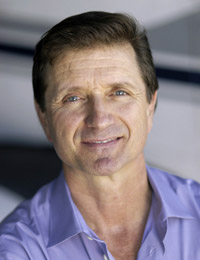License to learn
False confidence
 I remember sitting on a runway with a flight review student, years ago, waiting for a takeoff clearance. The crosswind was exceptionally gusty
I remember sitting on a runway with a flight review student, years ago, waiting for a takeoff clearance. The crosswind was exceptionally gusty
and strong that day, so I asked the fellow if he thought his skills were up to the challenge. With apparent complete confidence, he replied that he would have no issue with the winds. Fine with me. So we lifted off, and promptly began to track diagonally to the runway. With nearly every nasty gust and accompanying wing dip he’d blurt out, “Whoops!” followed by commentary such as, “Didn’t see that coming” or “That one was nasty.”
How is it that a person can be so sure of his ability and be so wrong about it at the same time? Over the years, I’ve known more than a few pilots sporting a similar level of false confidence about their abilities. In most instances, their false confidence was based on an assumption of what they thought they could do, with very little understanding of what they couldn’t or shouldn’t do in a given set of circumstances.
In the case of Whoopsman, I have no doubt that he had successfully mastered crosswinds of lesser intensity in the past. He hadn’t, however, grappled with gusty crosswinds of this magnitude. So his false confidence was based on the extrapolation of a skill he did possess into an area where he was no longer in possession. Without knowing the limits of his ability, he falsely assumed he had the gift and chops to handle the drift and drops.
Had his confidence level been balanced with an understanding of what he couldn’t do (based on his and the airplane’s aerodynamic limitations), he would have more accurately appraised his ability to handle such aggressive winds. Knowing only what you can do tells you very little about what you can’t or shouldn’t do. While the former offers the confidence to act in a specific situation, it’s the latter that prevents you from adopting a level of false confidence so often associated with unsafe behaviors.
Let’s assume that my flight review student knew he couldn’t handle direct crosswinds greater than15 knots and/or gusts beyond 20 knots (I’ll show you in a second how he might know this). His declaration of being able to handle crosswinds under those conditions would be an authentic expression of confidence. No self-deception there.
The reason it’s important to have some idea about the limits of our abilities is quite simple. What you can do tells you one thing; what you can’t do tells you many things. For instance, if the 10 Commandments only spoke of what you can do, then you’d need a lot more than 10 of them to cover every acceptable behavior. That’s a lot of stone, and someone will be burning the midnight bush just to etch all those possibilities. That’s why eight out of 10 commandments speak in terms of what you shall not do (in my church it was actually six you shall not dos and four give it your best shots). By knowing the limits of your capabilities and refusing to exceed them, your confidence in those abilities becomes much more authentic.
The question is, how might you learn about the limits of your skill and abilities if you haven’t
put them to the test? There are a few ways to determine this. You might simply guess at your capability to perform confidently. Yes, sometimes people like Whoopsman guess wrong. More often, however, they guess correctly. After all, if I know I’ve handled a direct 10-knot crosswind, it’s not much of a stretch to assume that I might successfully handle one at 12 knots, especially if I’ve had a chance to practice in 10-knot crosswinds for some period of time. With a little common sense, it’s possible to guess well.
You can also consult others you’ve flown with and ask them to make an assessment of your piloting ability. If you’ve recently flown with an instructor or another experienced pilot, then either of these individuals might be able to offer some insights into the practical limits of your skills.
Finally, there’s simply no better way to know your limits than to do an experiment to discover them. Sometimes you just have to put yourself to the test to see what you’ve got under the hood. This often means testing your skills under the supervision of a capable flight instructor. It’s why I would have encouraged my student to fly if he were reluctant-to-unsure of his ability to handle gusty crosswinds on flight review day. Even if he discovered he couldn’t handle a 20-knot crosswind, at least he’s learned an equally valuable lesson about the limits of his skill. Ultimately, if you don’t actually do it, then you really don’t know it and have no right to claim confidence about it.
Keep in mind that an overconfident pilot often has an enlarged ego and his presence is frequently revealed by statements such as, “Who is the greatest pilot…and why am I?” A falsely confident pilot can have a perfectly normal ego, but is often ignorant about the limitations of his or her skill level. That’s why a well-rounded pilot (or an oval-shaped one) who understands what he can do—along with what he can’t or shouldn’t do—has a much more accurate definition of his and his airplane’s true capabilities.
That should give you real confidence.
Rod Machado is a flight instructor who owns a Cessna 150. Visit the author’s blog. Rod Machado’s training books are available in iPad format.


